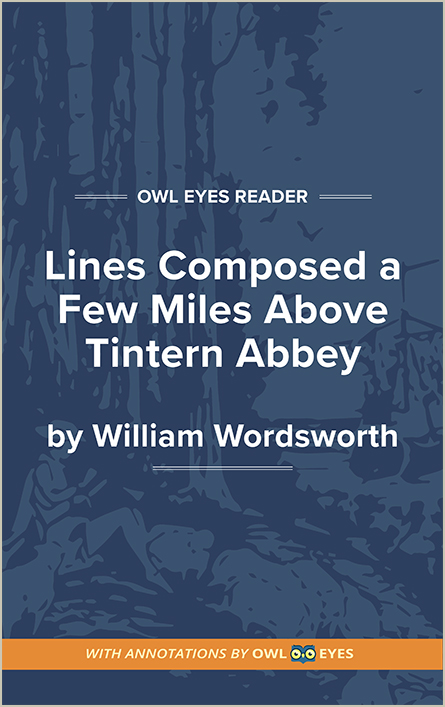Analysis Pages
Historical Context in Lines Composed a Few Miles Above Tintern Abbey
William Wordsworth (1770-1850) was born in Cockermouth, England and attended Hawkshead Grammar School, where his love for poetry developed. Later, he studied at St. John’s College, Cambridge. During his university years, Wordsworth witnessed the effects of the French Revolution firsthand while on a walking tour of Europe. He sympathized with the cause of the revolution because in his opinion, revolution was one of the most romantic, spontaneous acts of rebellion. However, after witnessing the brutality and gruesomeness of the war, Wordsworth began to lose faith in humanity, believing that only nature could provide him comfort and solace. In 1795, Wordsworth met fellow poet Samuel Taylor Coleridge, and together they published Lyrical Ballads in 1798. Among the foremost Romantic poets, these men turned away from the prominent epic poems of the time in favor of lyric poetry that contemplated man’s place in nature, the role of the imagination, and the possibilities for sublime experience.
Historical Context Examples in Lines Composed a Few Miles Above Tintern Abbey:
Lines Written a Few Miles above Tintern Abbey, on Revisiting the Banks of the Wye during a Tour, July 13, 1798
🔒"The wild green landscape...." See in text (Lines Written a Few Miles above Tintern Abbey, on Revisiting the Banks of the Wye during a Tour, July 13, 1798)
"connect The landscape with the quiet of the sky...." See in text (Lines Written a Few Miles above Tintern Abbey, on Revisiting the Banks of the Wye during a Tour, July 13, 1798)
"Five years have passed;..." See in text (Lines Written a Few Miles above Tintern Abbey, on Revisiting the Banks of the Wye during a Tour, July 13, 1798)

